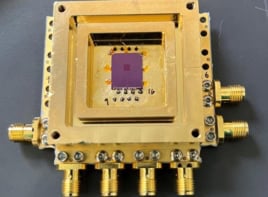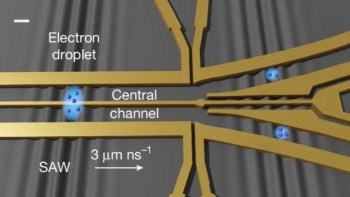The physics community was stunned in January when Jun Akimitsu of Aoyama-Gakuin University in Tokyo and co-workers discovered superconductivity in a simple metallic compound at 38 K - twice the previous record for a metallic superconductor. Akimitsu's group publishes its method and results this week, although several groups have already verified that magnesium diboride can indeed support resistance-free current flow (J Akimitsu et al 2001 Nature 410 63). Amid a flurry of activity, evidence is now emerging that - contrary to initial expectations - the traditional Bardeen-Cooper-Schrieffer theory of superconductivity can explain the new effect (S L Bud'ko et al 2001 Phys. Rev. Lett. 86 1877).
The Bardeen-Cooper-Schrieffer (BCS) theory describes how the thermal vibrations of a superconductor’s crystal lattice – known as phonons – enable pairs of electrons to travel through the superconductor without meeting electrical resistance. It also relates the mass of the atoms in the lattice to the superconducting transition temperature – the temperature below which material conducts electricity without resistance. Sergei Bud’ko and co-workers at the Ames Laboratory of Iowa State University, US, found that they could modify – and even raise – the transition temperature of the compound by using different isotopes of boron. This strongly suggests that superconductivity in magnesium diboride is governed by BCS theory, although it is still possible that an unknown coupling effect between the pairs of electrons may be obscuring the result.
New research is appearing in the Los Alamos archive every day as physicists around the world clamour to establish the properties of the newly discovered superconductor. The investigations into magnesium diboride range from the theoretical – including its critical current density and quantum characteristics – to the applied, for example, its ability to form wires and tapes. Future studies may focus on the hunt for superconductivity in similar compounds. Paul Canfield and his team from Ames Laboratory have also found that magnesium diboride superconducts in wire form, raising hopes that the material is the key to the superconducting devices of the future.



